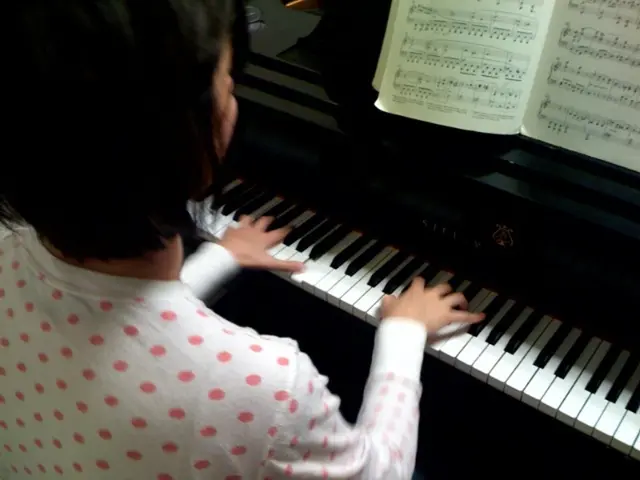Artificial Intelligence entity, dubbed "Byte," acquires skills to manage forest blazes
Artificial Intelligence Revolutionizing Firefighting: The Wildfire Twins Project
Artificial intelligence (AI) is making significant strides in the field of firefighting, particularly in forest fire scenarios. The 'Wildfire Twins' research project, led by Sören Pirk, is at the forefront of this technological advancement.
The project's primary objective is to teach machines to autonomously navigate through forest fires and extinguish fires using AI. To achieve this, the team is working on mathematical models and building 3D models of individual trees, undergrowth, and grass for a more realistic training environment.
Sören Pirk, the project's head, came up with the idea while working for a tech company in the USA. The European Union has shown its support for the project, providing funding of two million euros.
The approximately 100,000 euro training robot 'Byte', developed by researchers at the Christian-Albrechts-Universität in Kiel, is expected to provide detailed information on fire scenarios for firefighters in the future. Currently, Byte is collecting data on fires of different intensities at Schleswig-Holstein's State Fire Service School in Harrislee near Flensburg.
Group Leader René Heyse envisions that technology could be used in its final state for vegetation fires, as they are affecting more and more. An AI-assisted platform - drones or robots - could help avoid endangering deployed personnel, especially during the crucial phase of the initial situation assessment, which needs to happen quickly in an emergency.
Heyse also hopes that technology can assist in investigating fires, helping to determine the origin, direction of spread, and presence of people in the area. He demonstrates how smoke can ignite and explains that the AI must learn to interpret the flames.
In the long term, Pirk envisions autonomous systems that could independently fight fires, similar to those currently raging in the south of Europe. Potential future applications include fully autonomous aerial firefighting systems, swarm robotics, integrated "system-of-systems" approaches, and AI-enabled early chemical and environmental threat detection.
Current advancements in AI for firefighting focus heavily on autonomous drones with sophisticated sensors and AI systems that enable real-time detection, navigation, and fire suppression. Notably, large AI-enabled drones such as the Rain 2 model integrate computer vision and environmental data to autonomously monitor and extinguish fires, even in hazardous and remote locations, adjusting their operations dynamically for optimal effectiveness while minimizing human risk.
The XPRIZE Wildfire competition exemplifies cutting-edge progress by promoting innovations aimed at detecting and suppressing wildfires within 10 minutes. Semifinalist teams use AI-powered autonomous systems—including drone swarms and unmanned aerial vehicles (UAVs)—to surveil large areas, detect fire inception early, and initiate rapid extinguishing efforts autonomously or with minimal human intervention.
AI-driven tools extend beyond aerial units. Fire departments increasingly deploy AI-enhanced sensors and geofencing to improve early smoke detection, emergency call management, and situational awareness on the ground. Technologies like AI audio-to-text transcription assist dispatchers in faster response, while AI processes data from connected devices and drones in real-time to provide comprehensive incident management support.
In summary, AI's role in firefighting is rapidly expanding from augmented situational awareness and decision support to fully autonomous detection and suppression, especially in forest fire scenarios, where rapid response and navigation through difficult terrain are critical.
Read also:
- Spheron and Nubila Team Up to Use Web3 Technology for AI that Combats Climate Change
- Renewable marine fuel with a reduced carbon footprint will be supplied by Seaspan, a newly-established collaborator in the climate movement.
- Anticipated Arrival of Additional 150 Electric Buses by BVG Next Year
- ChatGPT Transforms into an Intergalactic Tour Guide in the Sequel: Part 2








